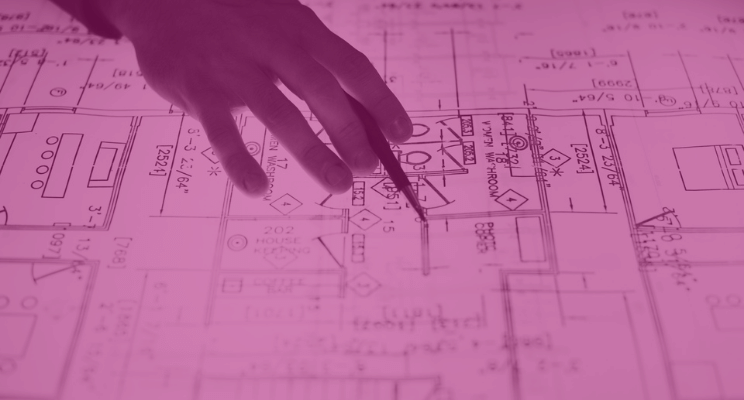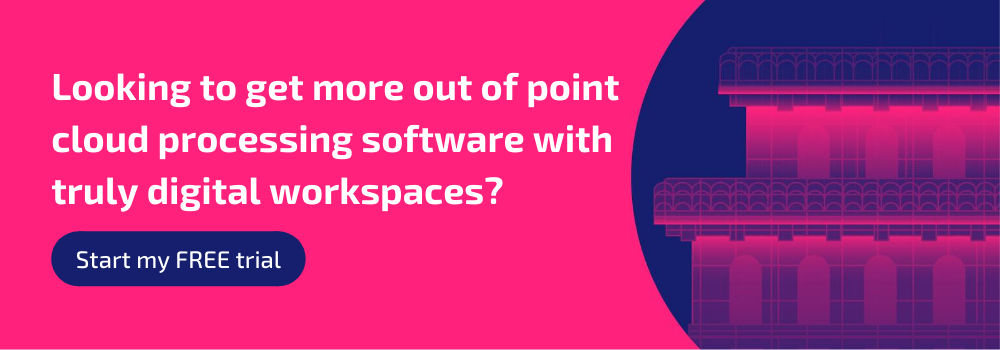How to Create a 3D CAD Model Using Raw Point Cloud Data

Point cloud files are a powerful way to store and use spatial data for 3D modelling. A one-time survey of a site yields precise data that can be used to aid the design process — but only if you get it right.
The hardware, software and techniques you use will have a huge impact on the time it takes to go from the survey, through registration, and to then get that data into CAD.
Here are the three essential steps you need to take:
Step 1: Source hardware that can handle your point cloud dataset
Point clouds hold highly detailed, highly precise information about the environments they map. But that precision comes at a cost: large projects often run to thousands of scans and the dataset may exceed 1TB.
The registration process and the import and manipulation of the 3D model into your CAD software requires considerable computing power. Consequently, the ability of your hardware to handle this process is a hugely significant factor in the time cost of your project. Provisioning appropriate hardware will cut days from the length of your project; provisioning the wrong hardware could damage your project before you’ve even started.
The registration process requires a fast CPU, RAM, and Hard Disk and manipulating the model in CAD will require a fast graphics card. Between the two tasks, you need a strong all-rounder. For the CPU, you’ll want the fastest affordable option.
For RAM, 16GB should be considered the minimum, but 32GB is a better choice. For large projects, you could go up to 128GB. For storage, you will want an SSD. Even an SSD with a moderate specification will provide a huge performance gain over an HDD.
Although a high-end video card is not necessary for registration, it is needed for work in CAD. Pick a card that has been designed for professional graphics use rather than gaming, and pick a card with high memory and bandwidth. The NVIDIA Quadro range is ideal and has been designed specifically for this use.
Finally, you’ll need a high-quality motherboard to ensure that these other components can work together as a lower-quality motherboard could cause a bottleneck.
Multi-thread processors
For processing and design, multi-threaded processors can give you a significant productivity boost. The importance of this will depend on the software you are using. You should investigate if either the 3D modelling tools or point cloud registration software (more on both later) can take advantage of multiple threads to undertake tasks simultaneously. The number of threads and cores a processor has should play a significant role in your investment decisions.
For example, an 18-core, 36-thread Intel Core i9-9980XE running at its 3.0GHz base will far outperform an Intel Core i7-9700k with 8 cores and 8 threads — even if the latter ran at its Turbo clock of 4.9GHz. It’s the difference between having a team of 36 people working against a team of 8 — even if the 8 are individually slightly faster, they have no chance.
Step 2: Build your foundation with solid point cloud registration
To do anything with point cloud data, you need to ‘register’ that data. Laser scanners are limited to line-of-site measurements. Point cloud data in its rawest form consists of many sets of points, each the result of an individual scan. It is only by stitching these together in an alignment process called point cloud registration that you are able to produce a final point cloud of the entire scene.
To produce an accurate 3D model, point cloud registration must be undertaken with as much precision as each point cloud possesses internally. If this is not done correctly, any resulting model will be inaccurate and potentially worthless.
Point cloud registration is done using software, and you need the right software for the job. Quality software will be compatible with a wide number of point cloud file types, able to accommodate scans completed using ‘registration targets’ and able to complete targetless point cloud registration.
Registration can be very time-consuming. In the field, surveyors are moving away from the use of targets to speed up the scanning process. However, this can cause delays in processing, requiring more manual oversight and taking far longer in the lab. Investing in recently developed point cloud registration software that uses advanced machine vision processing can accelerate registration by 40%-80%, and almost completely remove your need to sit in front of the screen and run manual cross-checks.
What is critical to your ability to turn point cloud data into a 3D model is accuracy. Making the right investments in point cloud processing software can save you a lot of time (and money) in the long run. But if your scans aren’t registered properly, they won’t produce 3D models that can deliver.
Step 3: Import registered point cloud data into CAD
Once the registration process is complete, the point cloud data needs to be converted into a format which CAD software can read. The exact filetype will depend upon the software you are using.
Revit, Autodesk’s main program for modelling for Building Information Modelling (BIM) uses RCS and RCP file types. Recap, also creates these formats for visualisation. Bentley Systems uses the POD format for point clouds generated by its Pointools software. It is good to check that your point cloud processing software is able to export to a format compatible with your favoured CAD solutions. If in doubt, an e57 file can usually be converted into the native format used by the CAD vendors such as RCS or POD or used natively such as in Graphisoft’s ArchiCAD.
From this point, everything comes down to the CAD software you are using to complete your project. Each will be different, but ultimately, you need to create surfaces out of the many points within a point cloud. Then it is up to you how you manipulate and store the data. Much of that comes down to what your intentions are — using the point cloud to direct a construction project, quality check a product, assess a heritage location or update an operational BIM. There are a lot of possibilities, and each will impact the right CAD investments and next steps.
Bringing It All Together
Each of these steps should work together to achieve your objective. A surveyor, architect or engineer using point cloud data for BIM for a client will have very different requirements to a graphic artist creating a 3D model for use in a video game.
The hardware, software and methods (targets vs targetless) you use should align to help you achieve these objectives. Specific requirements you may want to consider include the level of detail (LOD) you require, the urgency of your projects and which CAD software you are using.
As we have stressed, the key to being able to deliver on any of these possibilities is getting registration right. If your data is not registered properly, the accuracy of the entire point cloud will be compromised. Get registration right and the number of post-registration applications for your point cloud data are near limitless. Investigate your possibilities and invest accordingly.
Tags: point clouds


